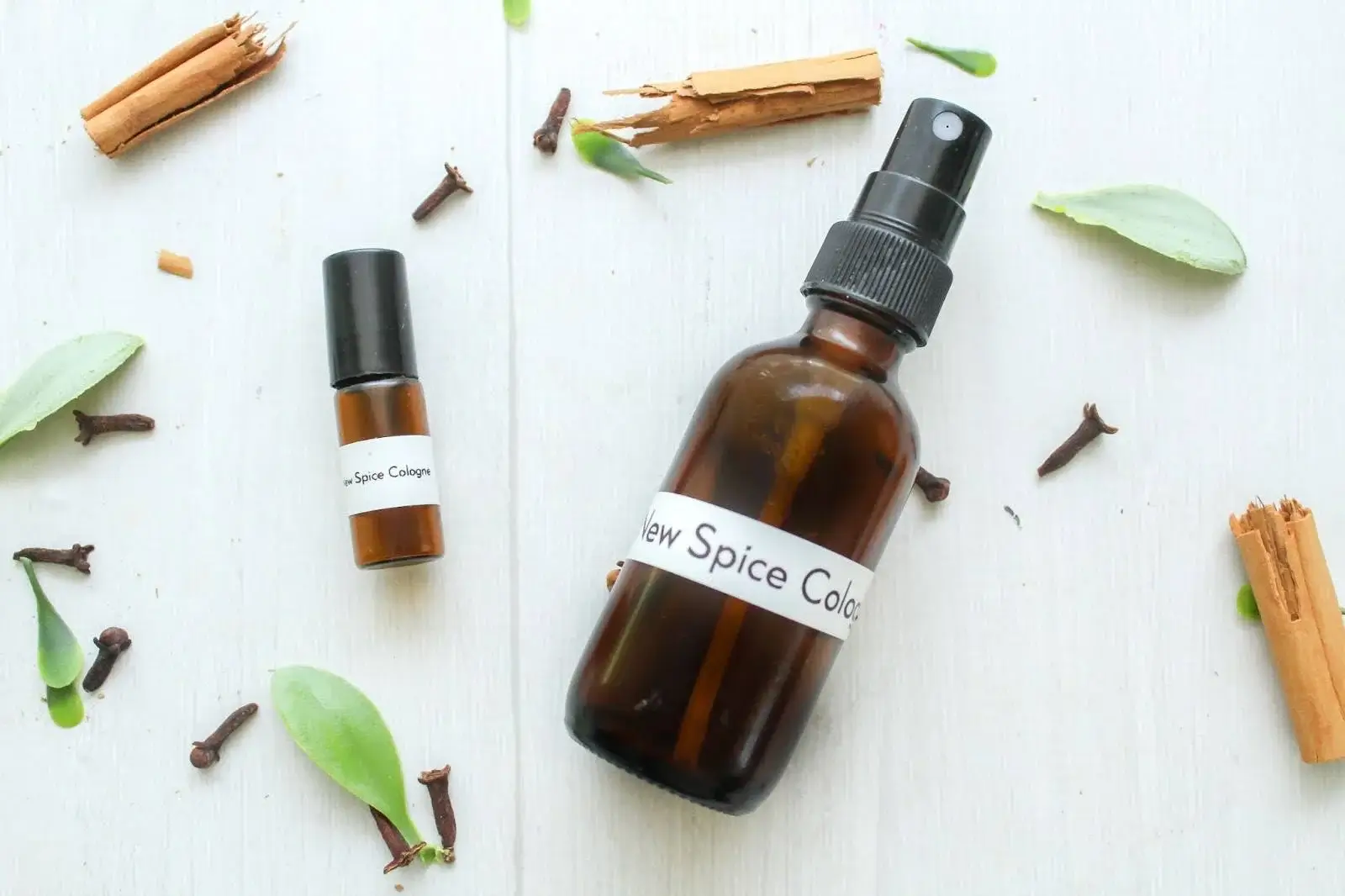There’s something so fun and satisfying about whipping up your own body care goodies, especially when they’re this simple, effective, and nourishing for your skin. Whether you’re pampering yourself, making a thoughtful gift for your child’s teacher, or doing a make-and-take at a party, group function, or shower, this is a great option. A Homemade Sugar Scrub is quick to make, easy to personalize, and filled with basic ingredients you can actually pronounce.
In this post, I’m sharing one of our favorite go-to sugar scrubs, which is universally friendly, along with a couple of essential oil variations that we keep on hand year-round. These scrubs are gentle enough for everyday use and so luxurious they feel like a spa day in a jar.
Every single ingredient has a purpose, and we’ve kept things clean, simple, and totally non-toxic.
Table of Contents
Why Exfoliation Matters
Our skin naturally sheds dead cells, but sometimes it needs a little nudge, especially if you’ve been out in the garden, chasing little ones, or dealing with dry patches. Exfoliating helps clear away dry skin, allowing your skin to breathe, absorb moisture more effectively, and feel soft and smooth again.
Our Homemade Sugar Scrub is a total favorite because it’s affordable, easy, and leaves your skin positively glowing without using any harsh chemicals or plastic beads. Sugar is both a humectant (draws in moisture) and an exfoliant, and when you pair it with good-quality oils and the right essential oils? Pure bliss.
Your exfoliation routine doesn’t have to be complex or costly. In fact, my Homemade Sugar Scrub uses just three ingredients and is so easy to make. Plus, the moisturizers make it like an exfoliator and moisturizer in one! If you want to amp up the exfoliation factor, add a pair of exfoliating gloves, a pumice stone, and/or one of my favorite tools, the fascia blaster.
You can use this recipe as a lip scrub or take it to your aesthetician for a low-tox pedicure.
Homemade Sugar Scrub Ingredients
You don’t need complicated chemicals or store-bought labels to have glowing, healthy skin. My Homemade Sugar Scrub is made with just a few simple, natural ingredients that nourish your body and gently exfoliate.
Here’s a closer look at each of the simple ingredients and why they work:
Carrier Oils for Deep Moisture
I love using organic coconut oil, which is naturally antimicrobial and rich in healthy fats that nourish the skin and lock in hydration.
You can also grab a spoonful of Mama Z’s Essential Oil Base if you have it on hand or add a little vitamin E oil for a more luxurious option. These are my top options because they have a better viscosity than other carrier oils.
But don’t feel married to that option, especially if you have allergies! Try one of these instead:
- Avocado oil – Great for those with allergies and soothes delicate skin.
- Extra-virgin olive oil – A rich, antioxidant-packed option for dry or mature skin.
- Grapeseed oil – Lightweight and non-greasy—great for acne-prone skin.
- Jojoba oil – Balances oil production and absorbs easily without clogging pores.
- Sweet almond oil – Lightweight, rich in vitamin E, and great for sensitive skin.
Always go for cold-pressed, organic oils when possible. And steer clear of highly processed vegetable oils, they just don’t nourish the skin the same way.
Exfoliants (Let’s Talk Sugar)
Organic Fair Trade sugar is one of the best natural exfoliants for body scrubs. It gently buffs away dead skin cells, helping to unclog pores, soften rough patches, and reveal radiant skin underneath. Seriously, your skin will never look better!
I love that organic Fair Trade sugar has a fine, even texture that’s safe for most skin types. This granulated sugar is my most recommended option for homemade sugar scrub, but here are a couple of other types of sugar that would work in a pinch.
Organic brown sugar – Softer and gentler, perfect for more sensitive skin.
Organic Turbinado sugar or sucanat – Coarse sugar that’s great for hands and feet, but avoid on delicate areas.
Organic coconut sugar – Natural and slightly coarser, better for tougher areas like elbows and heels.
Many of our Natural Living Family members can’t have sugar in their house, even for DIYs. I see you sugar detoxers! The best option to replace the sugar in this recipe is organic coconut sugar, but we have other scrub recipes like Epsom salt, Himalayan salt, and coffee scrub on our members-only site.
Essential Oils (Low-Tox Swap for Synthetic Fragrances)
With all-natural recipes this good, there is no need to use synthetic fragrances on your skin. Essential oils give you beautiful scents and real benefits.
Here are a few of our tried-and-true skin-friendly favorites:
Frankincense Oil – Regenerative and healing; ideal for aging or damaged skin
Lavender Oil – Calming and soothing; helps reduce inflammation and redness.
Orange or Bergamot Oil – Uplifting and antioxidant-rich (but phototoxic..avoid sun after using!)
Peppermint Oil – Known for its cooling & invigorating effect, it also soothes itchy, irritated skin
Roman Chamomile Oil – Calms irritation and is gentle enough for sensitive skin.
Rosemary Oil – Antioxidant-rich and clarifying to improve skin hydration and elasticity
Tea Tree Oil – Antimicrobial and cleansing; great for acne-prone or rough skin patches.
Vanilla Absolute, Oleoresin, or CO2 – Rich in antioxidants, which can help neutralize free radicals and protect against skin aging
Remember, just a few drops of essential oil go a long way. You can use one oil in your organic sugar scrub recipe, or blend several to customize the scent and benefits. Remember, listen to your body and honor your specific needs.
Caution: Some citrus oils can make your skin more sensitive to sunlight. Always check for photosensitivity warnings before applying them to exposed areas. Learn more about citrus essential oils and photosensitivity here.

Organic Sugar Scrub
Quantity
Ingredients
- 1 cup organic Fair Trade sugar
- ⅓ cup coconut oil, extra-virgin AND unrefined
- 64 drops total blend of skin-friendly essential oils of choice*
Instructions
- In a large glass bowl, combine the sugar and coconut oil. Mix until fully blended.
- Add essential oils and stir again to distribute evenly.
- Use a canning funnel to transfer the mixture into an airtight glass jar.
- Store in a cool, dry place and enjoy within 1-2 months.
Notes
How to Customize Your Body Care Products
This is where you get to have fun! Once you’ve got the hang of the basic recipe, you can mix and match ingredients based on your skin’s needs or seasonal themes.
One of my favorite hacks is matching the scents with the season. For example, I will incorporate floral scents for spring, tropical-infused coconut and lime blends for summer, warm spices for fall, and festive pine and peppermint for winter. The sky’s the limit!
If you want to support your skin care goals, take a peek at my Anti-Aging Cream and Skin Healing Serum recipe, which has great blends for aging, acne-prone, and sensitive skin.
Additionally, you can support your body by carefully choosing your essential oils. If you have sore muscles, try eucalyptus. If you need to balance emotions, try lavender essential oil, or a combination of lavender and orange essential oil. Need a little joy boost? Orange and vanilla can be so uplifting.
Experiment to see what you like the best. In the meantime, here are two of our go-to blends to give you a place to start with confidence.
Gardener’s Organic Sugar Scrub Variation
This amazing variation helps slough away dirt and soothe sore muscles. It consists of rosemary and peppermint essential oil. Dr. Z and I love this one after vacation hikes or full days of gardening. Itʼs deeply moisturizing and refreshing all at once!
Joyful Organic Sugar Scrub Variation
This cheerful scrub is one of my personal favorites, especially during the postpartum season when a little extra joy goes a long way. The uplifting aroma of orange and vanilla essential oils creates a spa-like experience right at home. Itʼs perfect for daily pampering, removing dead skin cells, or anytime you need a sweet, mood-boosting pick-me-up!
How to Use & Store Organic Sugar Scrubs
Your homemade sugar scrub is made with fresh, natural ingredients and is free from synthetic preservatives. This means proper storage is key! Healthy carrier oils and essential oils can oxidize over time, so it’s best to store your scrub in a cool, dry place and always keep the lid sealed.
Be sure no water gets in the jar, or you’re risking spoilage or mold. I recommend scooping the homemade sugar scrub with clean, dry hands or a spoon. When stored properly and with the right usage, your sugar scrub will stay fresh and fragrant for weeks!
To Use:
- In the shower or bath, scoop out a tablespoon of scrub with dry fingers or a clean spoon.
- Gently massage into damp skin in a circular motion, focusing on rough or dry areas.
- Rinse thoroughly with warm water and pat dry. No need to moisturize afterward!
To Store:
- Keep scrub in a cool, dry place in an airtight container.
- Avoid introducing water or dirty hands to the jar during use to prevent spoilage.
- Use within 1-2 months for best freshness.
Making your own sugar scrub is one of the easiest and most empowering things you can do for your skin. You get to skip the synthetic fragrances, nourish your body, and customize it however you want. Total win!
Give it a try and let me know your favorite blend.
- https://www.canr.msu.edu/news/homemade_sugar_scrubs_for_skin_care
- https://pmc.ncbi.nlm.nih.gov/articles/PMC4720453/
- https://pubmed.ncbi.nlm.nih.gov/24320105/
- https://pubmed.ncbi.nlm.nih.gov/12690999/
- https://pubmed.ncbi.nlm.nih.gov/7954745/
- https://pubmed.ncbi.nlm.nih.gov/29404883/
- https://pmc.ncbi.nlm.nih.gov/articles/PMC6017965/
- https://www.science.gov/topicpages/r/rosemary+essential+oil.html
- https://pmc.ncbi.nlm.nih.gov/articles/PMC7865210/
- https://pubmed.ncbi.nlm.nih.gov/21144345/










